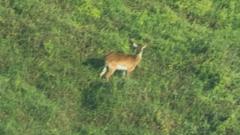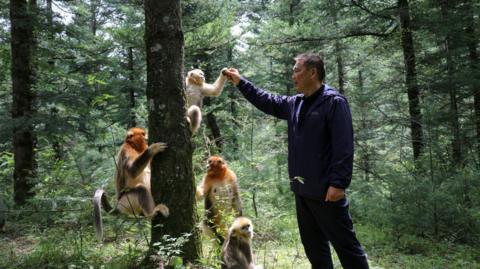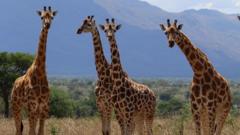In a significant wildlife breakthrough, researchers have successfully taken and published a photo of the Upemba Lechwe, a rare and endangered antelope species endemic to the Kamalondo Depression in southern Democratic Republic of Congo. This groundbreaking achievement marks the first time the species has been documented in over half a century.
During an aerial survey led by Manuel Weber, wildlife experts were able to spot only ten of these antelopes, stressing the population is critically low. Weber described the species as being "on the very brink" of extinction, emphasizing the urgent need for conservation efforts. The Upemba Lechwe is distinguished by its lack of dark stripes on its legs and the absence of dark patches on its shoulders, setting it apart from other antelopes in the region.
The Kamalondo Depression, where these antelopes reside, is noted for its incredible biodiversity, according to Weber. However, the area faces numerous conservation challenges, including increasing human encroachment, hunting, and fishing activities that threaten the local ecology. Weber expressed concern that the Upemba Lechwe, which he described as "extraordinary" for still existing, could soon vanish without immediate conservation intervention, stating, "This may be our only chance to save this species."
The study, published in the African Journal of Ecology, signals a renewed focus on the Upemba Lechwe, with hopes to drive forward initiatives that can protect these endangered animals and their habitat. The DR Congo has a rich history of notable wildlife imagery, with past viral photos capturing the unique interactions between species and their human guardians.



















